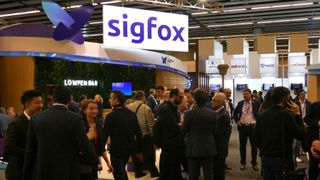Are we any closer to solving the IoT’s ‘format war’?
Competing platforms are confusing, but consolidation is underway
Growth of Sigfox
Perhaps the most high-profile LPWAN service provider is SigFox, which is now in 32 countries. “It’s a consortium of players providing an agreed specification for citywide or national IoT networks, ideally in partnership with governments, national bodies and mobile operators and offering an open/public solution for third-parties to connect to,” explains Bryant.

Sigfox is the only company deploying a single, global IoT network, working with just one operator in each country (including Arqiva in the UK, Cellnex in Spain, and Thinxtra in Australia and Hong Kong).
"But we're not a separate network in each country, we're closely aligned internationally so a customer can establish a single contract with a local operator for global connectivity of their IoT devices," said Roswell Wolff, President for Asia-Pacific at Sigfox, talking to TechRadar Pro at MWC. "It's a common framework, with a common pricing structure based on the number of messages per day, and the number of connected devices," he added.
There are also a number of Sigfox-only IoT devices, the development costs of which have been underwritten by Sigfox.

IoT connectivity: NB-IoT
There’s also a new cellular-based LPWAN technology that uses existing cellular networks: narrowband IoT (NB-IoT). “NB-IoT is the LPWAN version of LTE, which does involve a renewal of the core network as well as changes at the module level,” said Dickel Sooriah, Marketing Director at Actility, speaking at the MWC.
NB-IoT is offered by increasing numbers of mobile network operators, all using regulated spectrum. While LPWAN will likely take the low cost, low power end of the market, NB-IoT will take the high-end – those that are not as sensitive to cost – and IoT projects that absolutely require licensed spectrum, such as regulated utility companies.
Growth of NB-IoT and LTE-M
Many companies and service providers are embracing NB-IoT in the name of ‘future-proofing’ LPWAN networks, largely to ensure they have interests in more than one connectivity technology. At MWC, Actility announced that its ThingPark IoT platform will integrate with NB-IoT and LTE-M (more on the latter in a moment). “Actility is not a LPWAN company, it's a founder of the LoRa Alliance, but in five years’ time if something else works, we will do that,” said Sooriah.
Are you a pro? Subscribe to our newsletter
Sign up to the TechRadar Pro newsletter to get all the top news, opinion, features and guidance your business needs to succeed!
So NB-IoT is now being widely integrated by IoT service providers, which will probably mean ending the ‘war’ between LPWAN and cellular in the IoT sphere. “It’s partly to ensure that they do not back the wrong horse,” says Bryant about NB-IoT’s spreading popularity among IoT service providers. “But it’s also to maximise their addressable markets – the end result is that this is helping to reduce some of the conflict of previous standards and format wars.”
ABI Research predicts that NB-IoT and another cellular option called LTE-M (more a global service for trackers and wearables) will witness exponential connection growth from 2018 onwards, as large telecoms companies upgrade their networks over the course of this year.

The 5G future
The ‘format war’ in IoT is actually just a hyper-competitive space that includes myriad options for every possible loT project – and now there's one more connectivity option to consider: 5G.
But why would any IoT device need the 10Gbps bandwidth that 5G networks could offer? They won’t – this is purely about the IoT’s massive predicted growth (46 billion devices, sensors and actuators in 2021 according to Juniper).
“While 5G will be a versatile technology for enhanced mobile broadband (eMBB), massive IoT and ultra-reliable and low-latency communication (uRLLC), even after 2020, ZTE believes that 5G and the existing Sigfox, LoRA, and NB-IoT technologies will coexist for a long time,” said Dr Xiang Jiying, Chief Scientist of ZTE Corporation, to TechRadar Pro. ZTE develops radio communications including 5G.
Jiying further commented: “Sigfox, LoRa and NB-IoT will continue to serve LPWAN IoT devices and the existing vertical industries, while 5G IoT will deliver new possibilities for uRLLC applications.”
Such uRLLC projects could involve cloud robotics, autonomous vehicles and smart city infrastructure, along with remote surgery. If projects like that come to fruition, Industry 4.0 will be with us. No-one will then be able to say that a format war held back the IoT.
Image Credits: Jamie Carter
Jamie is a freelance tech, travel and space journalist based in the UK. He’s been writing regularly for Techradar since it was launched in 2008 and also writes regularly for Forbes, The Telegraph, the South China Morning Post, Sky & Telescope and the Sky At Night magazine as well as other Future titles T3, Digital Camera World, All About Space and Space.com. He also edits two of his own websites, TravGear.com and WhenIsTheNextEclipse.com that reflect his obsession with travel gear and solar eclipse travel. He is the author of A Stargazing Program For Beginners (Springer, 2015),










